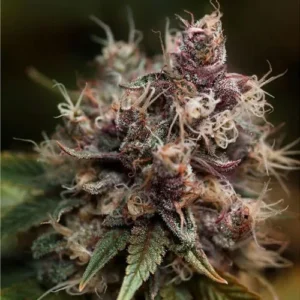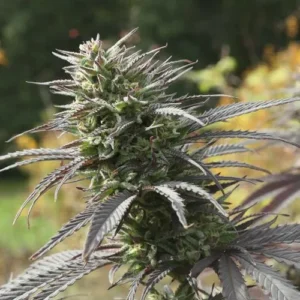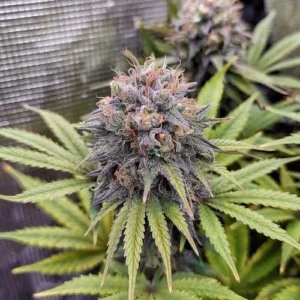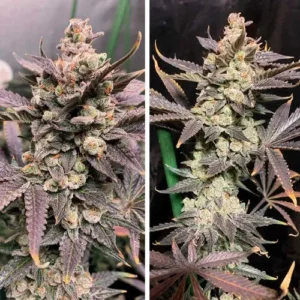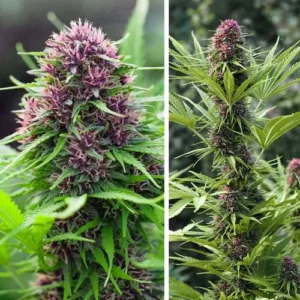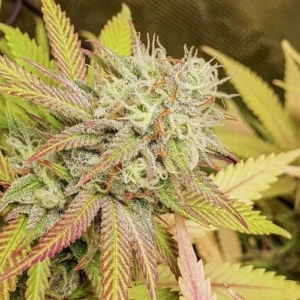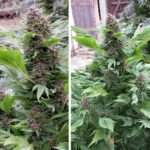
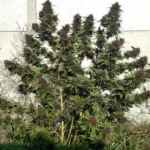
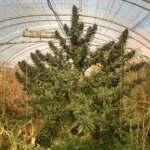
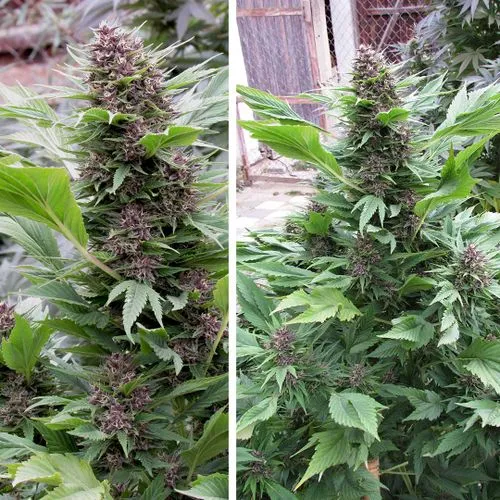
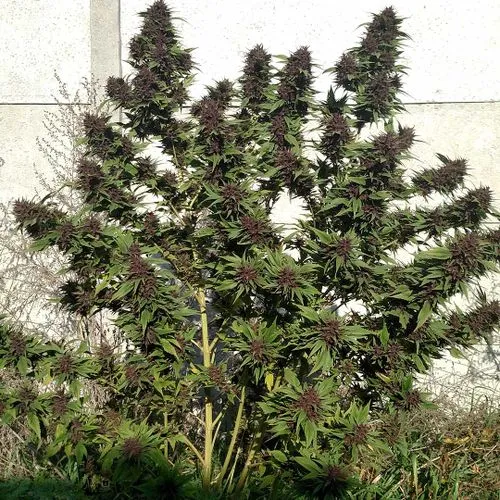
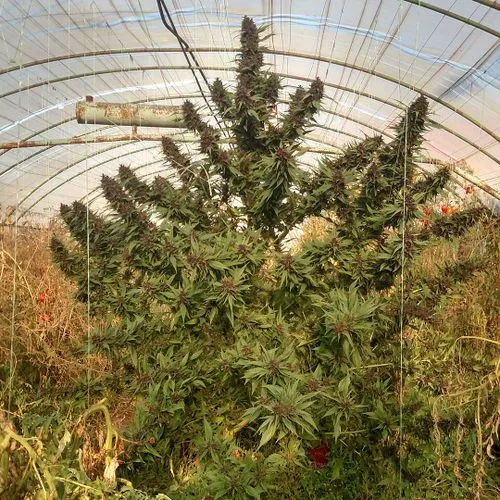
Frisian Duck
Lineage & Origin of Frisian Duck
Frisian Duck is a distinguished feminized cannabis strain, recognized for its unique genetic lineage and robust characteristics. This strain is part of the Dutch Outdoor family, celebrated for its adaptability and resilience to various climates. The lineage of Frisian Duck combines two exceptional strains: Frisian Dew and Ducksfoot. This parentage contributes to an intriguing mix of effects and flavors, making Frisian Duck a popular choice among cannabis enthusiasts.
The carefully crafted breeding of Frisian Duck emphasizes not only quality but also stability. Frisian Dew, known for its uplifting effects, meets Ducksfoot, a strain notable for its unique leaf structure. This blend results in a hybrid strain that showcases the best traits of both parent strains. Growers can expect a reliable and rewarding plant that thrives in outdoor environments while delivering a quality smoking experience.
Frisian Duck has garnered recognition in the cannabis community, winning a prestigious cannabis cup in 2016. This accolade highlights the strain’s quality, reinforcing its popularity. The combination of excellent genetics and consistent performance has made Frisian Duck a sought-after strain for both growers and consumers.
Sativa or Indica?
Frisian Duck is classified as a hybrid strain, embodying characteristics from both Sativa and Indica genetics. This hybrid status allows for a well-rounded experience, offering both uplifting energy and calming effects. Users typically report feelings of relaxation coupled with heightened awareness and creativity, making Frisian Duck ideal for various occasions.
The Sativa influence in Frisian Duck contributes to an invigorating effect that enhances mood and sociability. Many users find themselves more engaged and chatty, making it suitable for social events or creative endeavors. The Indica genetics introduce a soothing quality, allowing users to unwind while maintaining mental clarity.
This duality in effects positions Frisian Duck as a versatile strain. Whether used during social gatherings or creative sessions, its balanced profile makes it appealing to a broad audience. The hybrid nature ensures that users can enjoy a fulfilling experience without overwhelming sedation.
Effects & Flavors of Frisian Duck
The effects of Frisian Duck are best described as a pleasant hybrid high. Users often experience an uplift in mood, accompanied by gentle relaxation. This unique combination allows for enjoyable social interaction and light-hearted activities without feeling overly sedated. Many users appreciate the balance provided by Frisian Duck during leisure and creative pursuits.
Flavor profiles of Frisian Duck are rich and diverse. The strain features herbal, piney, and fruity notes, which create a unique and enjoyable smoking experience. Each inhalation reveals a complex mix that entices the palate, making Frisian Duck particularly appealing for those who value flavor complexity in their cannabis.
The combination of delightful flavors and pleasant effects enhances the overall enjoyment experienced by users. Frisian Duck stands out not just for its potency but also for the exceptional tasting experience it provides. This quality contributes to its popularity among cannabis enthusiasts seeking both fun and flavor in their strain selection.
Terpenes in Frisian Duck
The terpene profile of Frisian Duck plays a vital role in shaping its flavor and aromatic qualities. Prominent terpenes present in this strain include β-Caryophyllene, α-Pinene, β-Pinene, Humulene, and Terpineol. Each of these terpenes adds unique characteristics that enhance the user experience.
β-Caryophyllene is known for its spicy, peppery aroma and is recognized for its potential therapeutic benefits. This terpene may interact with cannabinoid receptors, potentially providing anti-inflammatory effects. Its presence in Frisian Duck enriches the overall flavor while adding potential wellness benefits.
α-Pinene and β-Pinene contribute fresh, piney notes to the strain’s aroma. These terpenes are associated with improved focus and memory retention. Their inclusion enhances the invigorating qualities of Frisian Duck while providing a refreshing experience.
Humulene and Terpineol further enrich the strain’s complexity. Humulene offers earthy undertones and may possess appetite-suppressing qualities, while Terpineol adds a floral, herbal aroma. Together, these terpenes create a well-rounded experience that elevates the enjoyment of Frisian Duck.
Conditions for Germination of Frisian Duck
To achieve successful germination of Frisian Duck seeds, specific conditions must be met. A warm and humid environment is critical for optimal sprouting. Ideal temperatures should range from 70°F to 85°F, creating a suitable environment for seed development during the early stages.
Common germination methods include using the paper towel technique or directly planting in moist soil. It is essential to ensure that the seeds remain evenly moist without becoming oversaturated. Proper moisture management will prevent seed rot and enhance the chances of successful germination.
By adhering to these optimal conditions, growers can ensure that Frisian Duck seeds germinate effectively. Healthy seedlings will emerge, laying the foundation for vigorous growth and robust plants in the subsequent phases of cultivation.
Flowering Time of Frisian Duck
Frisian Duck typically has a flowering time of 7 to 9 weeks. This moderate period allows growers to enjoy timely harvests while still developing robust, resinous buds. The growing cycle permits ample time for the strain to reach its full potential, showcasing its exceptional genetics.
During the flowering phase, careful monitoring is crucial. Growers should observe changes in trichome color and overall bud density to determine the optimal time for harvest. These visual indicators play a vital role in ensuring that the final product is of the highest quality.
With attention to detail during the flowering stage, Frisian Duck advocates bountiful yields of potent buds. The anticipation of harvest is often rewarding, as growers reap the benefits of their care and diligence in nurturing their plants.
Indoor and Outdoor Growing Conditions for Frisian Duck
Frisian Duck is well-suited for both indoor and outdoor cultivation. When grown outdoors, this strain thrives in sunny climates with well-drained soil. The plant’s ability to adapt makes it an excellent choice for various outdoor environments, leading to impressive yields.
For indoor cultivation, maintaining a controlled environment is essential for optimal growth. Factors such as lighting, temperature, humidity, and ventilation should be closely monitored. Providing adequate conditions allows Frisian Duck to produce XXL yields, maximizing the potential of its genetics.
Given its average plant height, Frisian Duck requires sufficient vertical space in both indoor and outdoor settings. Utilizing training methods like topping or low-stress training can help manage plant height effectively. These techniques ensure the plants receive adequate light exposure and promote healthy bud formation.
The versatility of Frisian Duck allows growers to choose their preferred cultivation approach while achieving rewarding results. Attention to detail and proper care will lead to a satisfying growing experience, yielding quality cannabis products that delight users.
Seed Bank: Dutch Pasion
Type of seed: Feminized
Reviews
There are no reviews yet. Be the first one to write one.
Write a review
Related products

